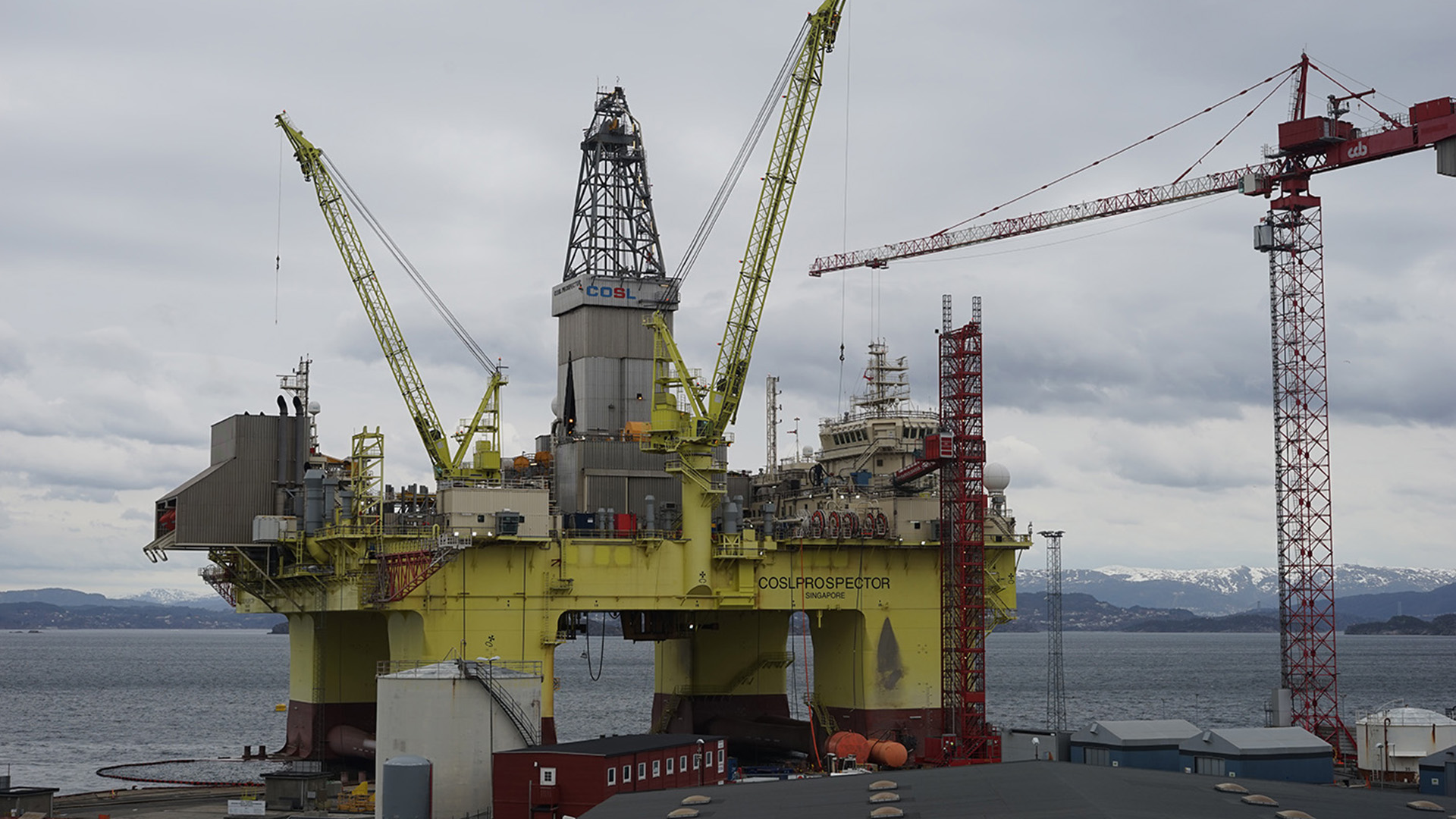Urbanisation in the North Sea mapped out
Guest researcher Nancy Couling set out to investigate the unseen urbanisation processes in the North Sea. At the halfway mark of her research, she has found several challenges for the North Sea: “We need to leave space for culture, heritage, and environmental values in order to make the North Sea a common space.”
Couling started the project in September 2017. Through a Marie Skłodowska-Curie Fellowship she has been able to explore the spatial impact of a wide variety of economic activities, such as fishing, freight shipping, offshore drilling, and offshore wind farms. The research project consists of three components. Firstly, a broad historical overview of major influences on the North Sea and its development since World War II offers a starting point for understanding the North Sea as an urbanised space. Secondly, Couling mapped out the North Sea by gathering fragments of information from the different countries that control parts of the North Sea. Site visits are the final aspect of the research. Field trips to different types of shorescapes help clarify specific aspects of the North Sea: Shipping in the ports of the Humber estuary, UK; natural heritage and offshore wind farm development in the Wadden Sea on the German coast; oil and gas production in the southern part of Norway. Each location comes with a juxtaposition. On the one hand, the North Sea is an industrialised space and productive landscape, on the other hand the sea is a cultural space with a rich heritage and environmental value. The field trips also reveal the human side of the North Sea, the impact on people and their daily lives.
Case study: Norway
Couling visited Norway and conducted multiple interviews with people, all tied to the North Sea in one way or another. From 1969, Norway became an oil nation. This turn towards the mining and distribution of oil in the North Sea has heavily impacted the development of the country as a whole and the (physical) relation with the North Sea in particular. Through the interviews it became clear that many people who work offshore love it. Their crew becomes their second family. In Norway, a cycle of 2/4 weeks, two weeks at sea, four weeks on land, is usual to balance work life and family life. Many of the interviewees note they love the sea and their work, and the fact that jobs are not standard office jobs, but shift work that allows a lot of free time in between.
Changing patterns
Working on the North Sea is both unique and extreme. Couling: “Urbanisation of the North Sea is an extreme form of urbanisation. People are willingly being pushed to their limits.” Added to that, there is not a lot of habitation on the North Sea. There are fixed transport routes with containers and a limited amount of ferries and cruises on these northern waters. There is some fishing going on, but the North Sea is primarily an industrialized landscape. Changing patterns and new developments, however, change the way the North Sea is being used.
Due to the warmer water temperatures, fish are moving further north in search of colder waters. This changes the patterns and uses of the North Sea. UK fishermen have limited fishing rights in Icelandic waters, and caught fish from Iceland, is transported back to the UK for processing. Existing infrastructure for this industry is less mobile and flexible than people and the fish themselves.
Energy transition also changes the movement of people on sea. Wind farms, for example, require a lot of maintenance, as well as converter platforms, for the generated energy. The necessary man power to conduct the maintenance has resulted in the use of floating hotel boats, to make the wind farms easily accessible to the crews.
The effects of these rapidly approaching changes can hardly be overseen. Brexit will further impact the urbanisation processes of the North Sea and future collaboration needs to be resolved. It is necessary to find a form of above-national level collaboration for North Sea governance, which is not necessarily the EU. All countries bordering the North Sea, including Norway and the UK, should be able to work together. One tool implemented by the EU is new legislation in which marine spatial planning will become mandatory from 31 March 2021.
Aside from the changing productive patterns, the North Sea is also a cultural space. The challenge is to leave space or create new space for cultural, heritage, and environmental values, in order to make the North Sea a common space. Different people from different fields are necessary to develop new perspectives. A first step towards achieving this goal is the Viscous Space Conference in June. Nancy: “I really like the title of this event. ‘Viscous space’ means ‘between solid and liquid’ or ‘between visible and invisible’. In the case of the North Sea, it is about the difference between the land and the sea, but also between the visible industrial aspects, and the invisible or less visible cultural heritage and emotional aspects of the North Sea. Both are important. The North Sea is a dynamic system, subject to continuous transformation, for better and worse. Environmental regulations have improved for example, while industrial output through rivers and plastic waste are still a huge issue. The beautiful thing about water ecosystems is their capacity to recover. But this is only possible when we allow the system the chance to do so. This means we need to be much more aware to start with.”
The Viscous Space North Sea Conference on June 20 will be the halfway milestone, reflecting on the work to date. Gathered feedback and new input will result in the building of a forum. In the next half year, the results will be evaluated, reacted upon, and the research will be completed. Ideally, this would result in a complete sea map of the North Sea, where the invisible systems and spaces across the land/sea threshold emerge.

